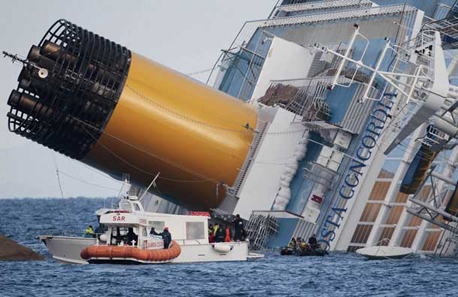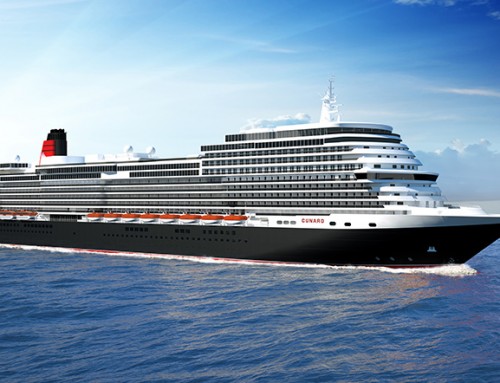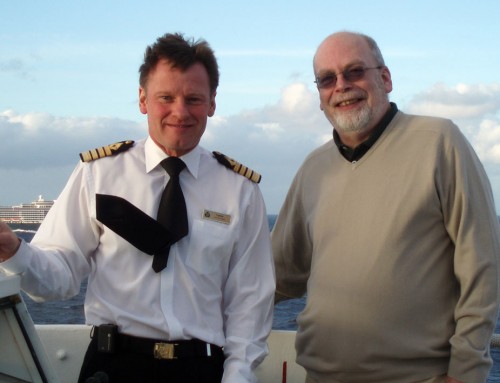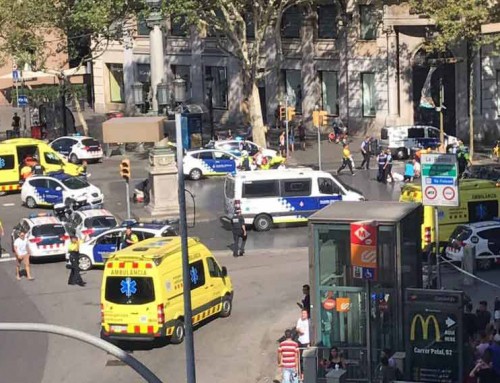 It’s no wonder so-called shipping “experts” profess to be puzzled by the Costa Concordia disaster. A modern, well-equipped ship packed with the latest technology should not have run aground or struck an underwater rock, whether or not that rock was marked on the charts.
It’s no wonder so-called shipping “experts” profess to be puzzled by the Costa Concordia disaster. A modern, well-equipped ship packed with the latest technology should not have run aground or struck an underwater rock, whether or not that rock was marked on the charts.
Part of that rock is clear to see, embedded in the capsized hull (below), snapped off as the 114,500-ton cruise ship struck it while travelling at 15 knots. A lengthy tear in the steel plates of the hull give a clue as to why the vessel took on so much water and began to list so quickly before capsizing within yards of the shore.
 Let’s make it clear now: the vessel did not ram the pier as it appeared in the picture at the top of my post written in the early hours of Saturday morning. The damage was caused earlier, and it is apparent that the captain brought his stricken vessel closer to land in order to aid the rescue operation.
Let’s make it clear now: the vessel did not ram the pier as it appeared in the picture at the top of my post written in the early hours of Saturday morning. The damage was caused earlier, and it is apparent that the captain brought his stricken vessel closer to land in order to aid the rescue operation.
The first priority of any investigation will be to establish why the ship was so far off course. The island of Giglio is not a cruise ship destination. Costa Concordia was not heading there for a day’s sightseeing; it was en route to Savona, in north-west Italy, after embarking passengers in Civitavecchia, the port for Rome, at the start of a week-long voyage.
The crew would be familiar with the route; they have travelled it many many times. It will have been almost hard-wired into the computers which control the operation of the ship, calculating how much power is required to make the right speed to arrive at the next port on time; working out the course on the electronic charts, and looking out on the radar for land and other vessels in the vicinity.
The ship was most probably on automatic pilot, with at least two look-outs stationed on the bridge to take over the wheel – actually a tiny joystick on the control desk – if necessary.
The captain is responsible for his vessel, but he does not command it from the bridge 24 hours a day. On a modern cruise ship, the captain’s role combines being a navigator with that of a manager supervising the crew and an ambassador greeting his guests – and having a ready answer for those who ask, without fail every week: “If you’re here at a cocktail party with us, who is driving the ship?”
When disaster struck Costa Concordia, Captain Francesco Schettino would have been informed immediately, and he will have made his way to the bridge straight away. Early reports from Friday night indicated that he announced the ship had suffered a power failure, although it would now appear that if there was indeed a loss of power, it came after hitting the rocks and not before.
There are huge questions about how long it took before the announcement was made to abandon ship. One passenger was quoted as saying that the emergency signal of seven blasts on the ship’s whistle was the signal to get in the lifeboats, whereas anyone who has paid attention at the emergency drill which takes place at the start of every cruise will know that is not the case.
The emergency signal requires passengers to get their lifejackets and go to the muster stations – it does NOT mean “Abandon ship.”
The drill itself – and whether one had taken place – will have to be looked at. I don’t know what happened on Concordia, but present legislation requires the safety drill to be carried out within the first 24 hours of a voyage. We might expect that to change to ensure the drill occurs before leaving port. After all, the cabin stewards on a plane don’t wait until half-way through a flight before telling passengers where the emergency exits are.
The experience of Concordia might also persuade passengers to pay more attention to the safety drill. All too often I have witnessed bored passengers ignoring the announcements and talking among themselves before dashing back to the bar at the earliest opportunity.
From the earliest statements issued by Costa Crociere it was apparent that the evacuation procedure was not going as it should. My knowledge of Italian is not extensive, but with the help of a Google translation, it was obvious that “the position of the ship” (which we now understand to be the fact that it was listing further and further by the minute) was making it difficult to get the remaining passengers into the lifeboats.
That will explain why some panicked and jumped into the sea – but then, jumping into the sea is another thing that is expected in an emergency. The safest method of doing so is demonstrated at the emergency drill. It is anticipated that there will be occasions when it is safer to jump off the ship and then clamber aboard a liferaft or a lifeboat from the water, rather than wait as crew struggle to lower the boats.
As the world mourns the deaths – however many are eventually discovered – we must also be thankful that almost all the 4,200 passengers and crew on board were safely rescued.
And we must learn from the disaster; not only to reduce the risk of it ever happening again, but to make sure that if it does, we are better prepared.







Sad times Captain, I am sure lessons will be learnt for all of us “That Cruise”
I feel sorry for all the families of not just the passengers but the lovely staff too. Not only do they loose their husbands and wives for months on end, but to hear this must feel them with dread. Our prays are with them all.
John,
7 short,1 long DOES mean abandon ship per IMO regulations.
The costa cruises have been more than once nearby the island and blow their horn as a greeting to the islanders, the german tv showed this evening even a video of a prior Costa ship, showing this occured more than once…
It would appear that passenger ship lifeboat design, and the techniques of launching lifeboats and getting into them, needs a drastic overhaul, since astonishingly they appear to have regressed rather than improved in the last hundred years. Cargo ships and tankers, with a small number of souls on board usually occupying the stern area, do have radically different techniques than fifty years ago. Giant passenger ships need to have these improvements adapted and applied to them.
I worked on cruiseships for over 7 years and never once had a delayed passenger drill, they were always done as we were departing the port. The reason this drill was suspended until the next day is due to the lateness of the sailing. The law being that it is only required within the 1st 24hrs is rediculous and as we have seen, a dissaster waiting to happen. These practices need to be revised immediately!
Awful lot of conjecture here regarding the role of the Captain here, Captain. Preliminary reports are suggesting “significant human error” was to blame – and that’s in a statement issued by Costa Crociere. So, as you say, what on earth was the ship doing so close to those rocks?